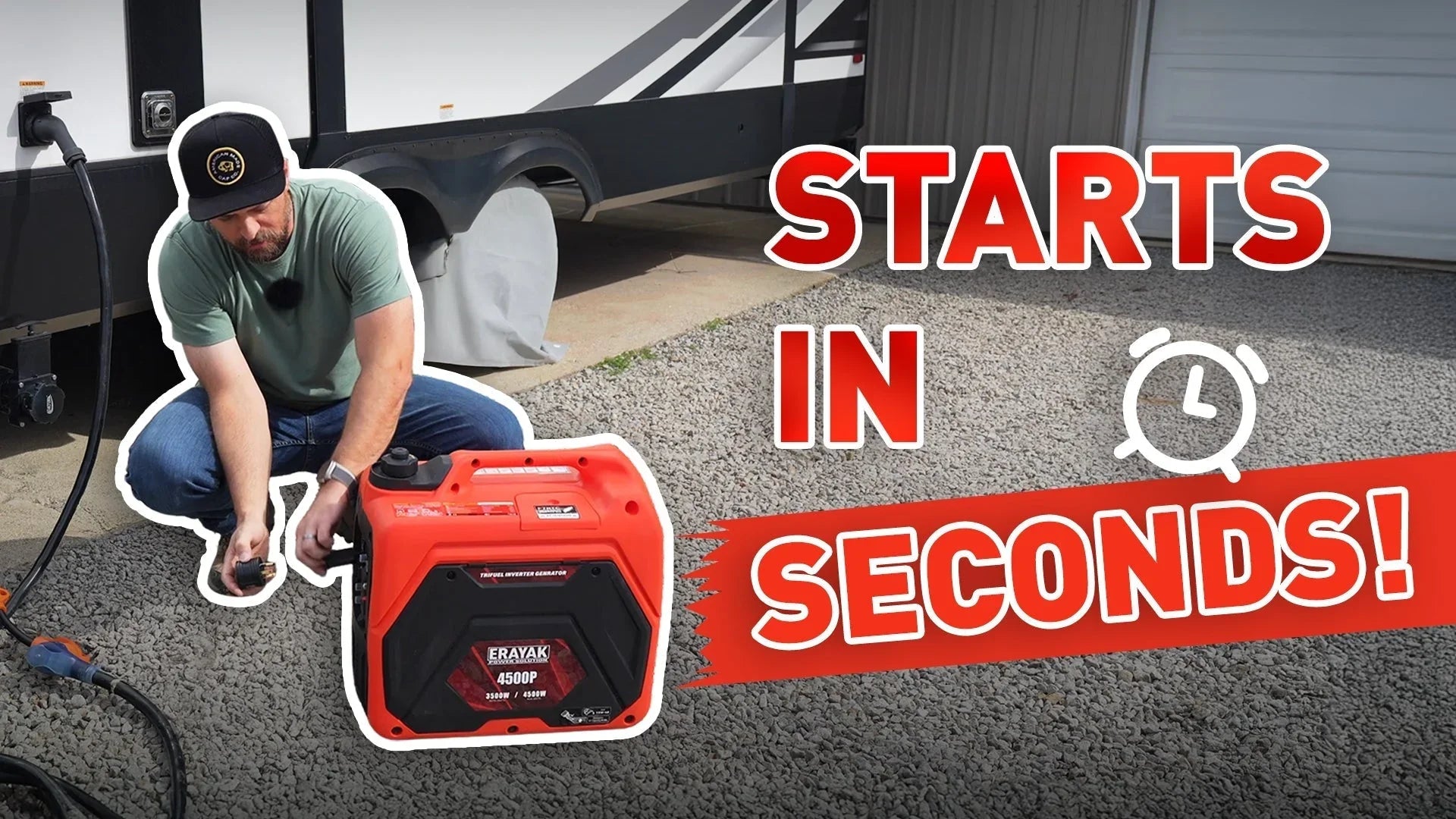Why Backup Power Matters for RV Owners
RV backup power is essential for full-time travelers seeking reliable electricity on the road. While life on the road offers freedom, it also includes energy challenges. Unexpected weather, remote campsites, or long journeys may leave you without access to hookups. That’s where an alternative power source becomes essential. With dependable energy support in place, you ensure comfort, safety, and convenience no matter where your journey leads.
Types of RV Power Backup Options
Choosing the right energy solution is key to a stress-free adventure. Here are some popular options:
- Portable generators
- Inverter generators
- Solar power setups
- Battery banks
In this post, we focus on using a portable generator as a practical and efficient RV power source, as seen in the accompanying video.
Setting Up Your RV Emergency Energy System
Preparing your RV for off-grid conditions or unexpected power loss is easier than it sounds. The following guide is based on the steps shown in the video, using a generator setup and essential adapters.
What You’ll Need
- 50 amp power cord from your RV
- 50 amp to 30 amp adapter (orange portion)
- Generator adapter
- Portable generator with vented gas cap and choke system
Step-by-Step Connection Guide
- Connect your RV’s 50 amp cord to the 30 amp adapter.
- Attach the generator-specific adapter.
- Insert the plug and twist clockwise to secure.
- Open the gas cap vent to allow airflow and prevent stalling.
- Set the choke to “start” before pulling the cord.
- Start the unit firmly, then move the choke to “run.”
This simple process ensures your auxiliary energy source is ready when needed.
Safety Tips for Using a Generator with Your RV
Having an external energy unit is helpful, but safety must come first. Remember these guidelines:
- Operate all fuel-powered units outdoors to avoid carbon monoxide exposure.
- Check oil and fuel levels before each use.
- Ensure tight and weather-safe connections.
- Match power output to your RV’s requirements.
- Use well-maintained extension cords and adapters.
Maintaining Your RV Power Setup
Routine care keeps your energy system running smoothly. Here are a few maintenance reminders:
- Start the generator monthly to ensure it’s functional.
- Use fuel stabilizers and store gasoline properly.
- Inspect cords, plugs, and adapters for damage or wear.
- Keep the generator clean and stored in a dry location.
- Troubleshooting tip: if it won’t start, check the vent, choke, and fuel.
Perks of Having Emergency Energy in Your RV
Being prepared offers more than peace of mind. With a ready-to-go power solution, you can:
- Run HVAC for temperature control
- Keep the fridge and freezer operating
- Power electronics and communication gear
- Stay longer in remote locations
- Travel with greater confidence
Hands-On Example from the Field
The practical method demonstrated—connecting adapters and ensuring vent and choke positions—shows how accessible this setup can be. Follow a clear routine and run monthly tests to stay adventure-ready.
Conclusion: Power Freedom for the Road Ahead
Backup power is a must for every serious RV owner. With the right equipment and a bit of know-how, you can safeguard your travels against unexpected outages and enjoy all the comforts of home, wherever you are. Take a look at your current setup, follow the steps above, and start building a reliable backup power plan for your RV today.
Ready to upgrade your adventure with dependable backup power? Explore our recommended setups and share your experiences in the comments!



